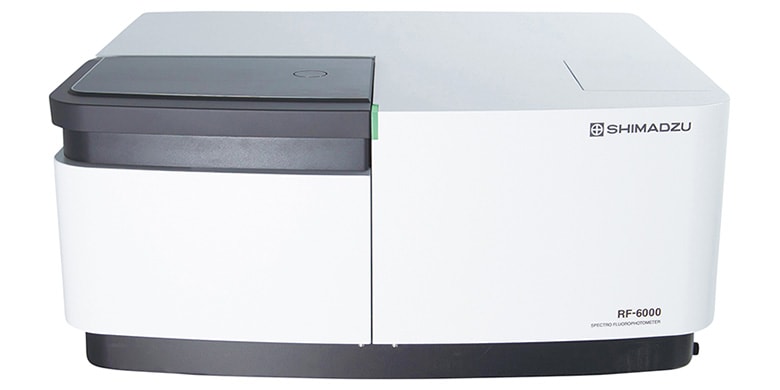
RF-6000
Separation analysis of multicomponent samples can be performed by synchronous fluorescence spectroscopy using a spectrofluorophotometer. Normally, excitation spectra measurements are performed by fixing the emission wavelength and then scanning wavelengths with an excitation monochromator. Also, emission spectra measurements are normally performed by fixing the excitation wavelength and then scanning wavelengths with a emission monochromator. Compared to those methods, synchronous fluorescence spectra measurements are performed by scanning both the excitation and emission wavelengths simultaneously while maintaining a constant wavelength difference between them. This wavelength shift (Δλ) remains constant while an excitation monochromator and an emission monochromator scan spectra wavelengths at identical scanning speeds. Light received by the detector is excited by the wavelength of the excitation monochromator, while only fluorescent light of this wavelength shifted by Δλ is emitted. Appropriate selection of Δλ allows for separation analysis of the target components.
January 12, 2016 GMT